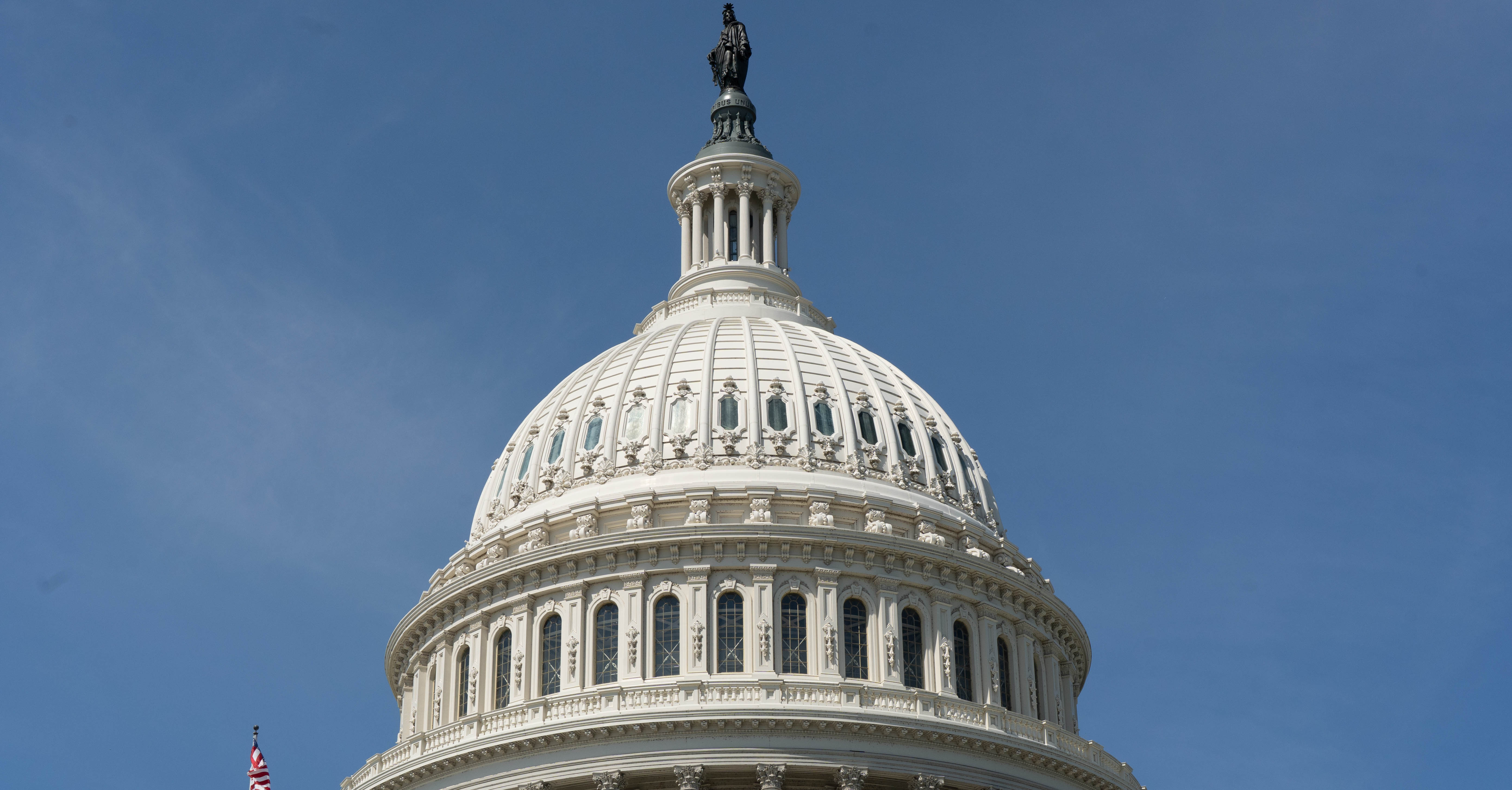Faculty Profile

Emily Toth Martin, PhD, MPH
- Professor, Epidemiology
- Director of Doctoral Studies, Epidemiology
- Co-Director, Michigan Center for Respiratory Virus Research and Response
- Co-Director, Michigan Public Health Integrated Center for Outbreak Analytics and Modeling
Emily Toth Martin, Associate Professor of Epidemiology, with tenure, at the School of Public Health, focuses on infectious diseases and respiratory viruses - including influenza, SARS-CoV-2, and RSV - and strategies to prevent and treat infection. Her research includes studies of vaccine effectiveness and virus transmission in community, hospital, and ambulatory settings. Dr. Martin's research is funded by Centers for Disease Control and Prevention, the National Institutes of Health, and philanthropic organizations.
Dr. Martin's scientific contributions include studies to improve observational designs for measurement of vaccine effectiveness, and immunologic studies of correlates of protection. Her work includes studies the epidemiology and transmission of respiratory viruses with associated vaccines (influenza and SARS-CoV-2) and those viruses for which vaccines may be forthcoming (RSV). Her work on transmission includes community-based, active surveillance studies that evaluate patterns of viral transmission in households and within child cares, including a case-ascertained study of close-contact transmission. Laboratory detection of viruses and immune correlates is key to this line of research, and Dr. Martin oversees a large field team and associated laboratory to support this effort. Dr. Martin is a core investigator for the CDC's US Influenza Vaccine Effectiveness Network, the CDC's IVY network for hospital vaccine effectiveness, and the NIAID Centers of Excellence for Influenza Research and Response.
Dr. Martin has a PhD and MPH in Epidemiology from the University of Washington School of Public Health and a BS in Microbiology from the University of Michigan. She completed her post-doctoral fellowship at the Seattle Children's Research Institute, followed by tenure track faculty positions at Wayne State University and the University of Michigan. She is a former health policy fellow with the UM Center for Health and Research Transformation and an alumnus of the ADVAC Advanced Course in Vaccinology. Dr. Martin is a recipient of the 2021 UM Presidential Award for State and National Leadership and the UM Institute for Healthcare Policy and Innovation Impact Accelerator Award for her role in the COVID-19 pandemic response. In addition to directing the Michigan Center for Respiratory Virus Research and Response, she serves as the faculty lead for the Department of Epidemiology Hospital and Molecular Epidemiology graduate program.
- PhD, University of Washington, 2009
- MPH, University of Washington, 2005
- BS, University of Michigan, 2001
The primary goal of my research program is to build a greater understanding of the
epidemiology of viral respiratory diseases, and the effectiveness of vaccines in preventing
these diseases, through the use of virus surveillance and molecular epidemiology.
Through characterizing existing and new interventions to prevent transmission and
severe disease, our research team works to identify strategies to reduce infections.
My team works in a range of settings, including households, child cares, outpatient
clinics, and hospitals. Our research interests center around three key questions:
(1) How can vaccines and other interventions for prevention of transmission or progression
of disease be used most effectively, particularly in high-risk populations? (2) How
do the intersections among multiple pathogens and between pathogens and chronic diseases
impact the epidemiology of infectious disease, and ultimately, the available opportunities
for intervention? (3) How can our methods for surveillance and epidemiologic analysis
be improved to make robust inferences about vaccine effectiveness available more quickly?
Specific research topics of interest include:
Real-World Effectiveness and Implementation of Vaccines against Influenza and COVID-19
Vaccines are the primary strategy for population-wide prevention of SARS-CoV-2 and
influenza. Initial SARS-CoV-2 vaccine effectiveness were strong, indicating the vaccines
were averting a substantial amount of disease. Successful administration of a yearly
SARS-CoV-2 vaccine will require the continual monitoring of vaccine effectiveness
through active surveillance, similarly to what is done for influenza. Our contributions
to these estimates are through our participation in three CDC-funded networks: US
Flu Vaccine Effectiveness Network, HAIVEN and IVY. In addition, we are currently leading
a currently leading an effort to enroll people throughout a large geographic area
in Michigan in a longitudinal CDC-funded cohort study (CoVE). This study incorporates
weekly sampling in order to capture changes in vaccine effectiveness against mild
or asymptomatic infection that would not be ascertained by the other networks. We
have also worked to to better define the measurement of the trajectory and outcomes
of severe infection in ways that will lead to more robust estimates of vaccine effectiveness
in future work (LOCI).
Combining Surveillance Systems and Cohorts to Draw Population Inferences for Respiratory
Virus Epidemiology
We have been very successful in leveraging long-standing respiratory surveillance
platforms to address current, emergent issues in respiratory epidemiology. Of particular
importance to these efforts has been the Household Influenza Vaccine Evaluation (HIVE)
study, a longitudinal cohort [17] that ran uninterrupted through the pandemic. Our
cohort enrollment is expanding into other areas of Michigan through remote sampling
methods with CDC funding (Community Vaccine Effectiveness; CoVE), and further detailed
work on transmission is underway with an R01 funded longitudinal case-ascertained
study of exposed household contacts (MHome).
Outbreaks and Emerging Virus Response
The emergence of SARS-CoV-2 prompted the need to quickly build the capacity for epidemiology
and laboratory testing within my current research studies. The resulting platform
enables us to quickly respond to emerging respiratory virus outbreaks. A consistent
thread throughout our efforts in this area is the rapid deployment of molecular surveillance
tests and/or the incorporation of genomic epidemiology.
Strategies to Reduce Respiratory Virus Transmission in Childcare
The last few years have highlighted the incredible importance of available, open childcare
for the general community[21]. The recent resurgences of viral illnesses in Fall 2022
has also highlighted the challenges in preventing viral illnesses from transmitting
in this setting. Our work in HIVE has shown that children attending childcare are
infected with a more expansive mix of viruses compared to those cared for at home.
We are currently working to better define respiratory virus transmission in the childcare
environment (MITIGATE). This work includes collaborations with an interdisciplinary
team of engineers and virologists to evaluate potential environmental mitigations
including filtration and ventilation.
Epidemiology of RSV and the Impact of New Vaccination and Prophylactic Strategies
Our research platforms also allow for the study of RSV epidemiology and correlates
of protection, and we are positioned to evaluate RSV vaccine and prophylactic effectiveness
in the coming years as this prevention landscape continues to develop. The study of
RSV vaccine presents unique challenges both biologically, due to frequent, recurrent
natural infections in all ages, behaviorally, due to the expected rollout of a vaccine
administered during pregnancy, and from a policy perspective, due to the high potential
cost of prophylactic strategies.
2. Kim SS, Chung JR, Belongia EA, et al. Messenger RNA Vaccine Effectiveness Against Coronavirus Disease 2019 Among Symptomatic Outpatients Aged ≥16 Years in the United States, February-May 2021. J Infect Dis. 2021; 224(10):1694–1698.
3. Monto AS, Lauring AS, Martin ET. SARS-CoV-2 Vaccine Strain Selection: Guidance From Influenza. J Infect Dis. 2022; 227(1):4–8.
4. Surie D, DeCuir J, Zhu Y, et al. Early Estimates of Bivalent mRNA Vaccine Effectiveness in Preventing COVID-19-Associated Hospitalization Among Immunocompetent Adults Aged ≥65 Years - IVY Network, 18 States, September 8-November 30, 2022. MMWR Morb Mortal Wkly Rep. 2022; 71(5152):1625–1630.
5. Tenforde MW, Self WH, Naioti EA, et al. Sustained Effectiveness of Pfizer-BioNTech and Moderna Vaccines Against COVID-19 Associated Hospitalizations Among Adults - United States, March-July 2021. MMWR Morb Mortal Wkly Rep. 2021; 70(34):1156–1162.
6. Delahoy MJ, Mortenson L, Bauman L, et al. Influenza A(H3N2) Outbreak on a University Campus - Michigan, October-November 2021. MMWR Morb Mortal Wkly Rep. 2021; 70(49):1712–1714.
7. Martin ET, Cheng C, Petrie JG, et al. Low Influenza Vaccine Effectiveness Against A(H3N2)-Associated Hospitalizations in 2016-2017 and 2017-2018 of the Hospitalized Adult Influenza Vaccine Effectiveness Network (HAIVEN). J Infect Dis. 2021; 223(12):2062–2071.
8. Levine MZ, Martin ET, Petrie JG, et al. Antibodies Against Egg- and Cell-Grown Influenza A(H3N2) Viruses in Adults Hospitalized During the 2017-2018 Influenza Season. J Infect Dis. 2019; 219(12):1904–1912.
9. Segaloff HE, Cheng B, Miller AV, et al. Influenza Vaccine Effectiveness in the Inpatient Setting: Evaluation of Potential Bias in the Test-Negative Design by Use of Alternate Control Groups. Am J Epidemiol. 2020; 189(3):250–260.
10. Segaloff HE, Petrie JG, Malosh RE, et al. Severe morbidity among hospitalised adults with acute influenza and other respiratory infections: 2014-2015 and 2015-2016. Epidemiol Infect. 2018; 146(11):1350–1358.
11. Leis A, McSpadden E, Segaloff H, et al. K-medoids clustering of hospital admission characteristics to classify severity of influenza virus infection [Internet]. Preprints; 2022 Dec. Available from: https://www.authorea.com/users/564863/articles/611920-k-medoids-clustering-of-hospital-admission-characteristics-to-classify-severity-of-influenza-virus-infection?commit=999377d883729713ea3b22c7421d7a0cf15f5a9a
12. Talbot HK, Martin ET, Gaglani M, et al. Coronavirus disease 2019 (COVID-19) Versus Influenza in Hospitalized Adult Patients in the United States: Differences in Demographic and Severity Indicators. Clin Infect Dis. 2021; 73(12):2240–2247.
13. Somers EC, Eschenauer GA, Troost JP, et al. Tocilizumab for Treatment of Mechanically Ventilated Patients With COVID-19. Clin Infect Dis. 2021; 73(2):e445–e454.
14. Baang JH, Smith C, Mirabelli C, et al. Prolonged Severe Acute Respiratory Syndrome Coronavirus 2 Replication in an Immunocompromised Patient. J Infect Dis. 2021; 223(1):23–27.
15. Flannery B, Meece JK, Williams JV, et al. Systematic Testing for Influenza and Coronavirus Disease 2019 Among Patients With Respiratory Illness. Clin Infect Dis. 2021; 72(9):e426–e428.
16. Petrie JG, Eisenberg MC, Lauring AS, et al. The variant-specific burden of SARS-CoV-2 in Michigan: March 2020 through November 2021. J Med Virol. 2022; 94(11):5251–5259.
17. Monto AS, Malosh RE, Evans R, et al. Data resource profile: Household Influenza Vaccine Evaluation (HIVE) Study. Int J Epidemiol. 2019; 48(4):1040–1040g.
18. Malosh RE, Petrie JG, Callear AP, Monto AS, Martin ET. Home collection of nasal swabs for detection of influenza in the Household Influenza Vaccine Evaluation Study. Influenza Other Respir Viruses. 2021; 15(2):227–234.
19. DeJonge PM, Monto AS, Malosh RE, et al. Distinct influenza surveillance networks and their agreement in recording regional influenza circulation: Experience from Southeast Michigan. Influenza Other Respir Viruses. 2022; 16(3):521–531.
20. Bendall EE, Callear AP, Getz A, et al. Rapid transmission and tight bottlenecks constrain the evolution of highly transmissible SARS-CoV-2 variants. Nat Commun. 2023; 14(1):272.
21. Hashikawa AN, Sells JM, DeJonge PM, Alkon A, Martin ET, Shope TR. Child Care in the Time of Coronavirus Disease-19: A Period of Challenge and Opportunity. J Pediatr. 2020; 225:239–245.
22. Begley KM, Leis AM, Petrie JG, et al. Epidemiology of RSV-A and RSV-B in Adults and Children with Medically-Attended Acute Respiratory Illness over Three Seasons [Internet]. medRxiv; 2022 [cited 2023 Feb 17]. p. 2022.11.04.22281968. Available from: https://www.medrxiv.org/content/10.1101/2022.11.04.22281968v1
23. Martin ET, Lauring AS, Montgomery JP, et al. Containment of a multi-index B.1.1.7 outbreak on a university campus through a genomically-informed public health response [Internet]. medRxiv; 2022 [cited 2023 Feb 17]. p. 2022.01.04.22268758. Available from: https://www.medrxiv.org/content/10.1101/2022.01.04.22268758v1
24. Mody L, Gibson KE, Mantey J, et al. Environmental contamination with SARS-CoV-2 in nursing homes. J Am Geriatr Soc. 2022; 70(1):29–39.
25. DeJonge PM, Gribbin W, Gaughan A, et al. Expanding Surveillance Toward Sharing Data with the Community: Qualitative Insights from a Childcare Center Illness Surveillance Program. Health Secur. 2021; 19(3):262–270.
26. DeJonge P, Martin ET, Hayashi M, Johnson S, Hashikawa AN. Communicable Disease Outbreaks in Michigan Child Care Centers Compared With State and Regional Epidemics, 2014-2017. Am J Public Health. 2019; 109(12):1707–1710.
27. DeJonge P, Martin ET, Hayashi M, Hashikawa AN. Variation in surface decontamination practices among Michigan child care centers compared to state and national guidelines. Am J Infect Control. 2019; 47(10):1176–1180.
Address: M5132 SPH II
1415 Washington Heights
Ann Arbor, Michigan 48109
Members of the media should contact sph.media@umich.edu for interview requests.
Areas of Expertise: COVID-19, Infectious Disease, Respiratory Viruses, Vaccines



